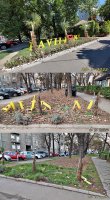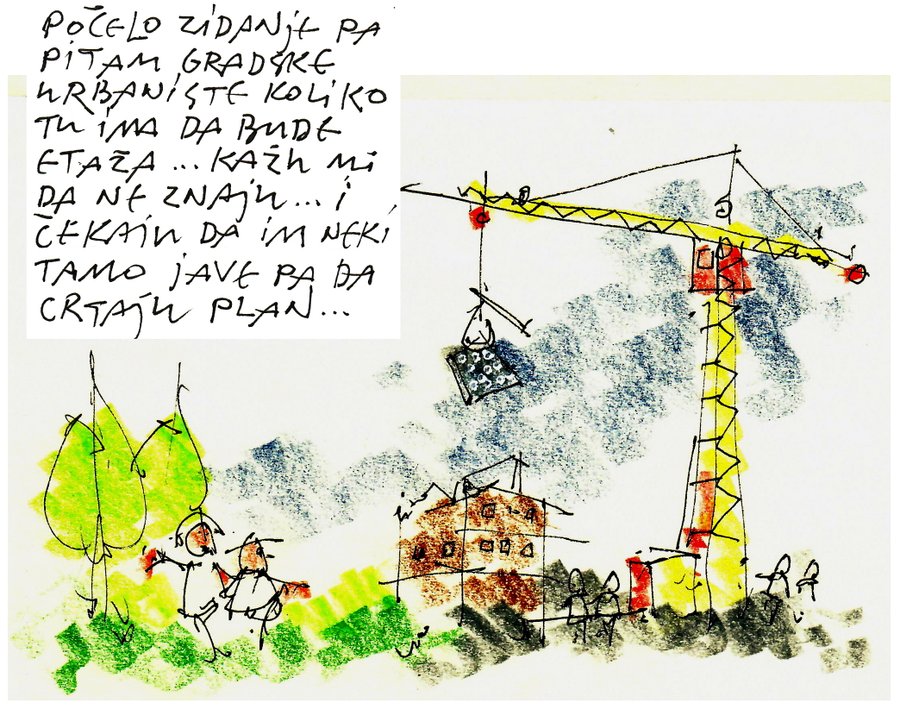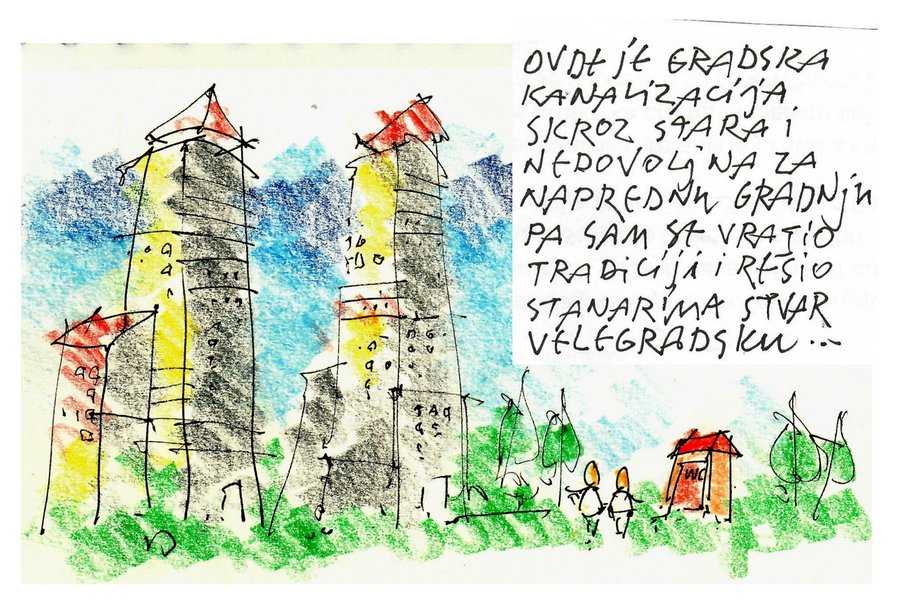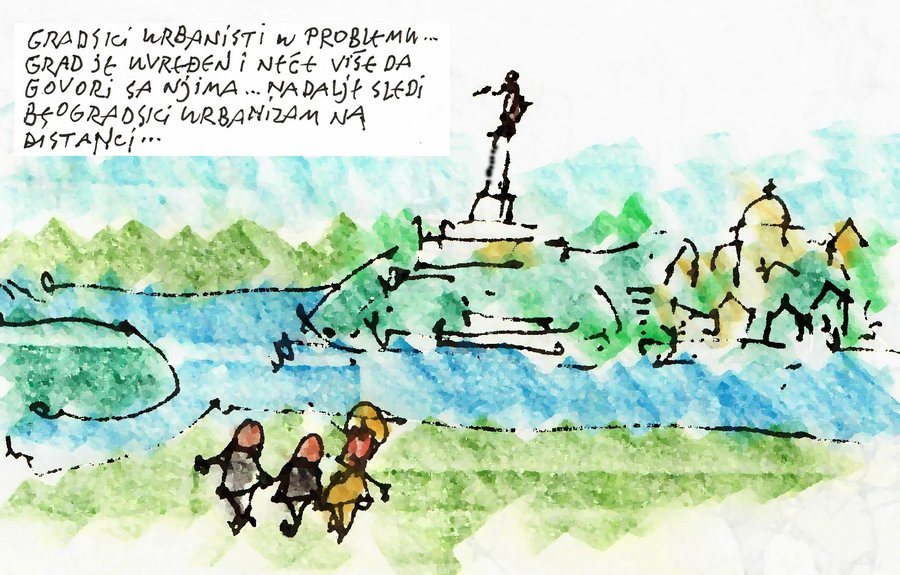
Javna rasprava o Beogradskom sajmu i Generalštabu
/ 25.04.2024. u 11:56- Komentari: 0
- /
- Pošaljite komentar
- /
- Čitanost: 900
- /
- Preporuke: 6
23. aprila 2024, u zgradi Tehničkog fakulteta u Beogradu održana je javna rasprava o Beogradskom sajmu i Generalštabu. Akademija Inženjerskih Nauka Srbije (AINS), Akademija Arhitekture Srbije (AAS) i Udruženje Arhitekata Srbije (UAS) su u saradnji sa podkastom Sfera kao medijskom platformom za dijalog o arhitekturi, održali stručnu javnu raspravu o kompleksu Beogradskog Sajma i zgrade Generalštaba.
Đorđe bi sasvim sigurno uzeo učešće u diskusiji, kao jedan od vođa panela, i zbog toga porodica smatra da je potrebno da ova rasprava bude što vidljivija, između ostalog
Dovidjenja, gospodine Bobicu!
/ 19.04.2024. u 20:05- Komentari: 52
- /
- Pošaljite komentar
- /
- Čitanost: 2484
- /
- Preporuke: 11
Klasicna tema- Beograd, popodne i gitare
/ 16.04.2024. u 16:39- Komentari: 77
- /
- Pošaljite komentar
- /
- Čitanost: 2018
- /
- Preporuke: 4
jedno umorno beogradsko popodne dolazi sa vetrom i promenom vremena od sunca ka oblacima.
Hronologija antipatriotizma...
/ 04.04.2024. u 09:35- Komentari: 316
- /
- Pošaljite komentar
- /
- Čitanost: 4226
- /
- Preporuke: 10
Svedoci smo masovnog i masivnog nerodoljublja oličenog u upornom i besomočnom uništavanju šuma i bacanju svakojakog smeća gde god ko stigne, od šuta i kesa sa đubretom do pikavaca i PDV računa...
U

ovde je nigde dobro mesto ...
/ 31.03.2024. u 22:54- Komentari: 5
- /
- Pošaljite komentar
- /
- Čitanost: 2440
- /
- Preporuke: 2
Dok su rakete krstarile nad Beogradom, tražeći svoje ciljeve
/ 29.03.2024. u 14:36- Komentari: 49
- /
- Pošaljite komentar
- /
- Čitanost: 6972
- /
- Preporuke: 8
Priču stare gospođe čuo sam u jednoj od onih dugih i izgubljenih noći krajem dvadesetog veka, dok su rakete krstarile nad Beogradom tražeći svoje ciljeve, a mi sedeli u memljivom skloništu.
Govorila je tiho, a prekidala je samo kad bi maramicom brisala suze. Svi smo je pažljivo slušali, čak su i deca prestala da plaču.

samo strpljivo ... biće i plan ...
/ 15.03.2024. u 07:48- Komentari: 4
- /
- Pošaljite komentar
- /
- Čitanost: 2434
- /
- Preporuke: 4

velegradski bre ...
/ 08.03.2024. u 18:25- Komentari: 5
- /
- Pošaljite komentar
- /
- Čitanost: 3175
- /
- Preporuke: 10

Divan Dan
/ 05.03.2024. u 20:15- Komentari: 418
- /
- Pošaljite komentar
- /
- Čitanost: 6892
- /
- Preporuke: 10
Ko bi da čestita Predsedniku rođendan može da ode da se potpiše na čestitku prekoputa OŠ Vladislav Ribnikar.


a sad ... čeka se ... da ipak progovore ...
/ 25.02.2024. u 10:51- Komentari: 19
- /
- Pošaljite komentar
- /
- Čitanost: 4240
- /
- Preporuke: 6
Najnovije VIP blogeri
- Izgrebani Oklop
Spiridon - Razonoda
njanja_de.manccini - Javna rasprava o Beogradskom sajmu i Generalštabu
Đorđe Bobić - Gde je krenuo Saban
natasa_tasic_10 - Davimo Beograd iliti DB
Ivan Blagojevic - Oda Drustvenim Naukama
Spiridon - OTVORENO PISMO MINISTARSTVU ZDRAVLJA
razmisljam - Dovidjenja, gospodine Bobicu!
angie01 - Klasicna tema- Beograd, popodne i gitare
jednarecfonmoi - Fragmenti stvarnosti u opštem prividu
Hansel
Najnovije blogeri
- KRUNSKI DOKAZ ZA NEIZLAŽENJE NA "IZBORE"
Filip Mladenović - DUB PUB: Stepping Out From The System
docsumann - Majstor za ljuljaške, klackalice, tobogane i ... II DEO
Filip Mladenović - ŽUTA OSA (8/24)
horheakimov - DUB PUB: Milion kvadrata
docsumann - Dokon um đavolje igralište
zilikaka - НАЦРТ РЕЗОЛУЦИЈЕ О ГЕНОЦИДУ У СРЕБРЕНИЦИ
Filip Mladenović - DUB PUB: A Bright New Day Is Coming
docsumann - Srbija u EU i NATO do 2030...
Filip Mladenović - DUB PUB: Woman, Hey
docsumann
Arhiva
Kategorije aktivne u poslednjih 7 dana
- Društvo (5)
- Život (4)
- Gradjanske inicijative (3)
- Zdravlje (2)
- Zabava (2)
- Muzika (2)
- Ljudska prava (2)
- Sport (2)
- Životni stil (2)
- Obaveštenja (1)






